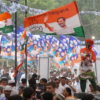Aadhaar After Death: RTI Reveals Just 1.15 Crore Deactivations in 14 Years
Despite 83 lakh deaths annually, UIDAI’s sluggish process leaves millions of Aadhaar numbers active beyond death, raising concerns over misuse and data integrity.
A Right to Information (RTI) query has revealed a glaring gap in India’s digital identity framework: despite over 83 lakh deaths recorded annually, the Unique Identification Authority of India (UIDAI) has deactivated just 1.15 crore Aadhaar numbers since the inception of the programme in 2010. The number represents less than 10% of the total estimated deaths in the country during this period, raising serious concerns about the system’s ability to stay current, prevent misuse, and maintain data integrity.
Filed by India Today TV, the RTI uncovered that as of June 2025, India has 142.39 crore active Aadhaar holders, while the country’s population was estimated at 146.39 crore by the United Nations Population Fund in April 2025. The average annual deaths, as per the Civil Registration System (CRS), stood at around 83.5 lakh between 2007 and 2019, indicating that the actual number of deceased Aadhaar holders should be significantly higher than the UIDAI’s deactivation tally.
An Inactive Deactivation Process
The low number of deactivations is not due to a lack of deaths—but a lack of administrative follow-through. Officials admit that the process is cumbersome, heavily dependent on death certificates, and reliant on external data from state governments and family members of the deceased.
In its RTI response, the UIDAI explained that the deactivation of Aadhaar numbers hinges on data shared by the Registrar General of India (RGI), which handles civil registration. “As and when RGI shares death records along with Aadhaar numbers, UIDAI—after due verification—deactivates the corresponding Aadhaar numbers,” the authority said.
To plug the widening gap, UIDAI issued revised guidelines in August 2023, outlining a mechanism for deactivation through integration with the Civil Registration System (CRS). The updated procedure requires a 90% name match and a 100% gender match between the Aadhaar database and death records. Once these are confirmed, UIDAI checks for any post-death biometric authentication or profile updates. If none are found, the Aadhaar is marked for deactivation.
However, even now, the process remains slow, manual, and susceptible to oversight—especially in rural or remote areas where death registrations are inconsistent and Aadhaar linkage is often incomplete.
Ghost Aadhaar Numbers and Electoral Implications
The implications of inactive Aadhaar deactivation go far beyond data hygiene. In some parts of the country, especially during the Special Summary Revision (SSR) of electoral rolls, inflated Aadhaar numbers have distorted demographic and electoral statistics.
In districts like Kishanganj (126%), Katihar (123%), Araria (123%), Purnia (121%), and Sheikhpura (118%) in Bihar, Aadhaar saturation has exceeded 100%—a technical red flag that signals more Aadhaar cards than people in the region.
Aadhaar saturation refers to the percentage of a region’s projected population that holds Aadhaar numbers. While officials claim the over-100% figures could be attributed to migration, duplication, or data inconsistencies, experts argue that a key contributor is the failure to deactivate Aadhaar numbers of the deceased.
The UIDAI acknowledged this in its RTI response, noting that unremoved Aadhaar numbers of deceased persons artificially inflate saturation rates and population data. Yet, it also stated that it does not maintain year-wise records of deactivations, making it impossible to track annual performance or systemic improvement.
No Data on the Unidentified
In another telling admission, the UIDAI said it does not have any estimate of the number of people in India who do not possess Aadhaar numbers. “No such information is available,” the RTI response stated.
This lack of oversight raises further concerns. While Aadhaar is often presented as a near-universal ID, used for everything from voter registration and ration delivery to bank accounts and digital services, the absence of data on both those left out of the system and those who should no longer be in it creates a blind spot that weakens the foundation of India’s digital governance.
What’s at Risk?
Inactive Aadhaar deactivation creates a range of potential risks:
- Welfare misuse: Benefits linked to Aadhaar may continue to be drawn fraudulently.
- Voter fraud: Electoral rolls linked to Aadhaar may include deceased individuals.
- Data integrity: Inflated records impact planning, delivery, and trust in public systems.
- Security: Active biometric IDs of the deceased can be targets for identity fraud.
While UIDAI has attempted to plug the gaps through guidelines and data sharing protocols, the scale of the problem calls for more automation, real-time integration with death registration systems, and a nationwide awareness campaign to encourage reporting of deaths by families.
Conclusion
In a country that prides itself on having created the world’s largest biometric identity system, the failure to systematically deactivate Aadhaar numbers of the deceased reflects a significant blind spot. At stake is not just the sanctity of a number, but the credibility of a system increasingly relied upon for everything from healthcare to democracy itself.
With 1.15 crore deactivations over 14 years against over 11 crore estimated deaths in that time, the Aadhaar framework must now answer an urgent question: how many ghost identities still roam its servers—and what is being done about them?
IT.




























